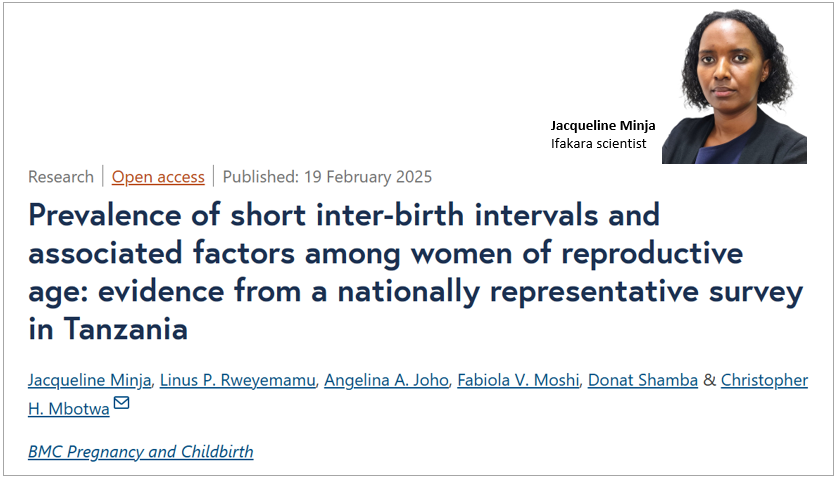
REPRODUCTIVE HEALTH: Scientists for birth spacing to improve maternal, child health

Scientists are calling for urgent action to promote optimal birth spacing in Tanzania, emphasizing its vital role in improving maternal and child health outcomes. This follows a recent study led by Ifakara Health Institute, published in BMC Pregnancy and Childbirth journal, which found that nearly half of all births in the country occur within short intervals, increasing health risks.
The findings show major gaps in reproductive health services and underscore the need for targeted interventions, including reproductive health education, improved access to contraceptives, and strategic use of media to raise awareness.
The scientists emphasize that understanding the magnitude and determinants of short inter-birth intervals is essential for designing effective public health interventions. In the study, they investigate the prevalence of short inter-birth intervals and the associated factors among women of reproductive age (15–49 years) in Tanzania by utilizing the 2022 Tanzania Demographic and Health Survey and Malaria Indicator Survey dataset.
High prevalence and contributing factors
The study, led by Ifakara Health Institute scientist Jacqueline Minja and co-authored by Donat Shamba, along with collaborators from the University of Dar es Salaam and the University of Dodoma, identified several factors influencing birth spacing.
According to the study, the overall prevalence of short inter-birth intervals in Tanzania stands at 42.6% with younger women (aged 15–24) more likely to experience short inter-birth intervals compared to older women. Key factors contributing to short birth intervals include young maternal age, marital status, delayed first childbirth, economic differences, geographical location, and birth order.
Economic, socio-cultural and geographical factors
The study found that economic disparities contribute to shorter inter-birth intervals, with women from poorer households experiencing a higher prevalence of short birth intervals than those from wealthier households.
Marital status was another key determinant. Women in marital unions had a greater likelihood of experiencing short inter-birth intervals, possibly due to socio-cultural norms surrounding reproductive decision-making. Additionally, women who delayed their first childbirth to age 30 or older were more likely to have closely spaced births, likely as a response to late fertility initiation.
The study found significant regional variations in birth spacing, with women in the Zanzibar, Lake, Western, Southwest Highlands, and Central zones being more prone to short inter-birth intervals compared to those in the Eastern zone. These disparities point to the need for region-specific interventions noted the scientists.
The role of media, technology in improving birth spacing practices
Interestingly, the study also highlighted the impact of technology and media in reproductive health. Women who owned mobile phones or had regular exposure to television were less likely to have short inter-birth intervals. This suggests that increased access to information through digital and mass media can positively influence family planning choices.
“Given the high prevalence of short inter-birth intervals, there is an urgent need for targeted education and awareness campaigns focused on reproductive health...Policymakers should consider leveraging various media platforms to disseminate information on the benefits of family planning and modern contraceptive use, especially long-acting reversible methods,” emphasized the scientists.
Strengthening interventions for optimal birth spacing
The research by Jacqueline Minja, Donat Shamba, and their colleagues calls for urgent action to promote optimal birth spacing in Tanzania. The study’s findings underscore the importance of targeted interventions to improve maternal and child health and provide critical evidence for policymakers and healthcare providers to strengthen birth spacing strategies and enhance reproductive health outcomes across the country.
“Our findings provide a foundation for refining interventions, policies, and educational programs to promote optimal birth spacing and improve reproductive health in Tanzania and beyond,” notes the scientists.
Addressing the factors contributing to short inter-birth intervals will be crucial in reducing associated health risks and improving overall well-being for women and children nationwide.
Read the publication here.
